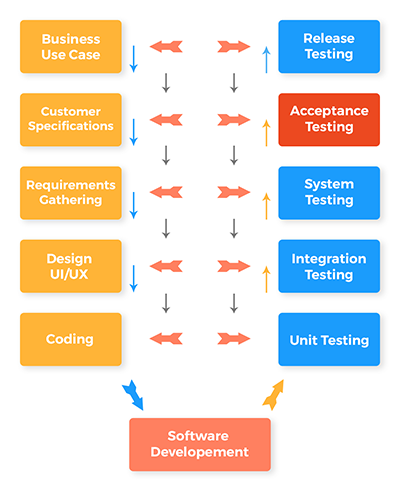“It’s not at all important to get it right the first time. It’s vitally important to get it right the last time.”
The above quote is from the book The Art in Computer Programming by Andrew Hunt and David Thomas. Indeed, this quote will be the only objective you’d ever need to stick to when delivering software. So, to deliver a flawless piece of software, meticulous Testing is mandatory. The more rigorous the testing, the better and flawless the results. Nevertheless, this is not limited to software alone but also to every other industry that has the notion of superior quality to the end user.
The scope of this blog is to cover the ins and outs of User Acceptance Testing, perhaps the most important type of testing that happens right at the end of the software development cycle.
What is User Acceptance Testing?
Having UAT as an acronym, User Acceptance Testing is usually carried out in the last phase of the software testing process. The foremost objective of UAT is to verify, from the user’s perspective, whether the software works according to the planned intention. It makes sure the developed functionalities meet the actual user specifications in any real-time scenarios. UAT is also referred to as beta testing which mimics the activities done by real users.
User Acceptance Testing
| User | Client or any other professional qualified for this sort of testing |
| Acceptance | The software should meet the acceptance criteria defined by the user before making it live. |
| Testing | Here testing is done by actual users who really use the software in a UAT environment to verify the acceptance criteria |
When it comes to UAT, less attention is given to functional specifications while more is showered on how the user perceives the application and if it works well for the user. Also, UAT confirms whether the application provides the excellent end-to-end user experience.
Why do you need UAT?
Consider you are delivering an application demo to the client and its broken midway failing to fulfil the user requirements. This kind of can never be entertained and this could potentially affect the development of the software further. Perhaps, the main reason for such glitches is failing to test the demo application before a presentation. To avoid this type of disruption, UAT needs to be done before presenting the application demo to the client.
Consider a real-time scenario, the software is under development and midway comes a change request from the Client. Practising UAT would intend you to document all the change requests and thus making sure that the changes are better communicated to the development team for implementation. This testing will give you clear picture whether the developed functionalities are in line with the requirements given by the project sponsors. If UAT is not carried out in SDLC, you may have to face risk in reputation, time spent, workforce, and it might even go to the lengths of legal complaints.
When to do UAT?

- The Application should be fully developed and stable to work.
- After the completion of other testing types such as Unit testing, integration testing, and system testing.
- Major defects should be fixed before UAT
- Regression testing should be done before UAT
- UAT environment should be created as an exact replica of the live environment
- After formal sign-off from the functional testing team to start off with UAT process.
Who conducts UAT?
- People who are not part of application, design, or development verticals can do UAT.
- Some companies will have a separate team for UAT, excluding the testers. The people from client organization who are not involved in the application can also take part in UAT.
- People who use the software in the real world should be part of UAT including the business analysts, stakeholders, brand managers, etc.
What impacts does UAT create in a Project Delivery?
Without any doubt, UAT is a daunting task but the outcome will convey a plethora of data to the application development team. The data includes how successful the product is, what else can be changed, what errors should be rectified and so on.
It’s needless to say that UAT plays a big role in building brands. Because once the reputation is lost, it’s very hard to build again.
“If you don’t like to test your application with acceptance criteria, most likely your users won’t like to use it either.”
“If an end user perceives bad performance from your website, her next click will likely be on your-competition.com.”― Ian Molyneaux







